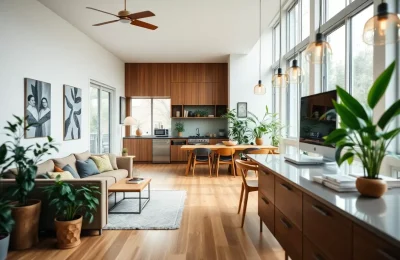
Contemporary artists have turned gallery spaces into artificial botanical gardens in an attempt to explore our relationship with nature. By creating immersive environments that imitate nature, they can create an entirely new experience for the viewer. These installations, while lacking the life and energy of a real garden, recreate the embodied atmosphere of a botanical garden without any of the natural elements. Using simple construction techniques, these works capture the essence of botanical gardens while blurring the lines between art and decor.
For example, in Taiyuan, China, a fictional botanist’s study room features a waterfall and three domes constructed of laminated timber beams. The structure’s spacing allows for better lighting conditions, and double-curved glass has operable windows. The three domed greenhouses are arranged in such a way to represent varying climates, and they are all surrounded by an aquatic garden. These environments are also aesthetically pleasing.
In contrast, botanical gardens in temperate climates are often small in size and limited in the variety of species they can accommodate. Because most botanical diversity is found in tropical regions, most botanical gardens are built in cities and are not able to expand their collections due to costs. In addition, most botanical gardens must maintain their collections in expensive facilities, which limits their capacity. Despite these disadvantages, they are an excellent way to preserve species for future generations.
The Sollection fund of a botanic garden is over 2000 species. The tree and shrub collection contains 217 species, whereas the medicinal collection has 111 species. Vegetable and fodder plants are the second largest section of the botanic garden. There are also 66 species of fruit and berry plants. Natural flora is home to 270 species, including 11 species in the Red Book of Ukraine. Neottia purpurata Smith, for example, belongs to the family Orchidaceae.










